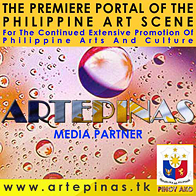
GENERATIONS
The Filipino Artists in New Zealand Inc. – also known by its much shorter name, Filinartizts, are proud to have its community website operating today on the World Wide Web. It is the beginning of this Group’s serious foray into capacity-building and social entrepreneurship in a sustainable way.
As an artistic and culturally-oriented organisation composed of Filipino-Kiwis in Wellington New Zealand, its aims is to mirror the rich culture of the Philippines by actively promoting the performance of a variety of Philippine-based art forms particularly those involving visual arts, dance, music, martial arts, literary arts and the performing arts. The list of Philippine Dance forms is long and it can be found on another page on this site. Here are but just a few examples expressed in video format for your en joyment:
Most Philippine dances were originally patterned after European dances during the Spanish Colonial Period in addition to Hindu and Arabic influences. Pandango Sa Ilaw, Cariñosa, Rigodon, Singkil, Kapa Malong-malong and Balitao – all these are but just a few examples of folk dances that Filipinos are known for. Aside from these, ethnic-created dances such as Tinikling have also made their way to international recognition. Through all these forms, Filipinos pay tribute to their cultural roots. Every district in the Philippine Archipelago has its own folk dance, interpreted attractively in festivals and local shows. These all have added to the country’s reputed contribution to world’s illustration of traditional arts.
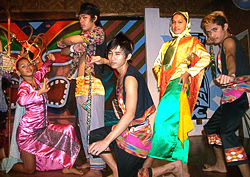 Filipinos are also known to be talented musicians world wide. This is due to their dedication and intense love for music. Even before Spain arrived on its shores in 1521, the ancient inhabitants of these tropical islands were expresss ing themselves through ethnic musical instruments. They composed a variety of songs in celebration of courtship, marriage, harvest and offerings. Much of their music has been revived. From ethnic rhythms to contemporary pop and jazz of the present times, Filipino musicians thrive because of their levels of adaptivity and creativity. Dance able tunes delight party-goers, melodious folk songs hit the airwaves and romantic ballads magnetize poignant hearts.
Filipinos are also known to be talented musicians world wide. This is due to their dedication and intense love for music. Even before Spain arrived on its shores in 1521, the ancient inhabitants of these tropical islands were expresss ing themselves through ethnic musical instruments. They composed a variety of songs in celebration of courtship, marriage, harvest and offerings. Much of their music has been revived. From ethnic rhythms to contemporary pop and jazz of the present times, Filipino musicians thrive because of their levels of adaptivity and creativity. Dance able tunes delight party-goers, melodious folk songs hit the airwaves and romantic ballads magnetize poignant hearts.
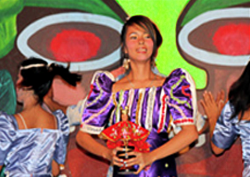 The variety and abundance of Philippine literature also evolved before the West arrived. Folk tales, epics, poems and marathon chants existed and were passed down from generation to generation through word of mouth. Tales as sociated with the Spanish conquest also took part in the country’s rich cultural heritage. Some of the pre-colonial literary pieces showcased in traditional narratives, speech es and songs are Tigmo in Cebuano, Bugtong in Tagalog, Patototdon is Bicol and Paktakon in Ilongo. Philippine epics and folk tales are varied and filled with magical cha racters. They are either narratives of mostly mythical ob jects, persons or certain places, or epics telling supernat ural events and bravery of heroes, customs and ideologies of a community.
The variety and abundance of Philippine literature also evolved before the West arrived. Folk tales, epics, poems and marathon chants existed and were passed down from generation to generation through word of mouth. Tales as sociated with the Spanish conquest also took part in the country’s rich cultural heritage. Some of the pre-colonial literary pieces showcased in traditional narratives, speech es and songs are Tigmo in Cebuano, Bugtong in Tagalog, Patototdon is Bicol and Paktakon in Ilongo. Philippine epics and folk tales are varied and filled with magical cha racters. They are either narratives of mostly mythical ob jects, persons or certain places, or epics telling supernat ural events and bravery of heroes, customs and ideologies of a community.
 In many forms that are found from the Philippines, theater is still an effective medium to promote social awareness and cohesiveness, as a means of entertainment and a liber al way to express one’s opinion. Most places in those is lands have their own town fiestas flaunted with festivities and shows. During the period of Holy Week, people stage the cenaculo– a theatrical presentation of the passion of Christ, and the moro-moro or comedia that relates to Christian and Muslim conflict. Some towns perform zar zuela, a Philippine version of Spanish light operetta, others present their poetic debate called duplo and karagatans. Another theatre form, the carillo, a shadow drama is usu ally shown after harvest. In the provinces, for example, Cavite has Sanghiyang, Batangas has Subli and Laguna presents their Turumba and Pasyon. These traditional plays exemplify the union of folk religion and Catholicism.
In many forms that are found from the Philippines, theater is still an effective medium to promote social awareness and cohesiveness, as a means of entertainment and a liber al way to express one’s opinion. Most places in those is lands have their own town fiestas flaunted with festivities and shows. During the period of Holy Week, people stage the cenaculo– a theatrical presentation of the passion of Christ, and the moro-moro or comedia that relates to Christian and Muslim conflict. Some towns perform zar zuela, a Philippine version of Spanish light operetta, others present their poetic debate called duplo and karagatans. Another theatre form, the carillo, a shadow drama is usu ally shown after harvest. In the provinces, for example, Cavite has Sanghiyang, Batangas has Subli and Laguna presents their Turumba and Pasyon. These traditional plays exemplify the union of folk religion and Catholicism.
AWAY AND FAR AFIELD
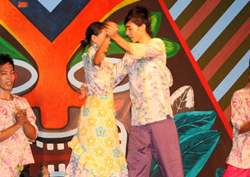 The Filipino Community in New Zealand has grown steadily over the years. For much older members, they are now on stream raising a third generation in this their adopted coun try.
The Filipino Community in New Zealand has grown steadily over the years. For much older members, they are now on stream raising a third generation in this their adopted coun try.
As migrants of a certain ethnic extraction, Filipinos – not thoroughly Asian, nor thoroughly Western either, are an interesting fusion of mixes of older cultures who have learned to take the best cultural characteristics of those worlds and weave it into colourful story of a people that spans nearly a thousand years of written history and trade with other nations. That’s over 40-gener ations and still counting.
To Aotearoa, as elsewhere around the world, the pioneers came. In a Census taken in 1936, there were six New Zealand residents who were born in the Philippines. Over the next 25-years, that core slowly grew as sap trickles down a tree. Then the country’s intake of Filipino students began to increase temporarily in 1960 under the Colombo Plan, a collective inter-governmental effort to strengthen economic and social development of member countries in the Asia-Pacific Region. Most of them re turned home, but a few stayed on in Aotearoa even as it was far afield from home.
New Zealand as a migration destination was yet to be discovered. In fact, there were only 405 Filipino residing in New Zealand as late as 1981. It would take under 10 years before more densely populated regions such as Wellington and Auckland experienced an exponential growth in their respective Fili pino-Kiwi communities.
Today, it is estimated that there are just over 45,000 Filipinos residing in New Zealand mostly resulting from an immigration policy that encourages highly-skilled individuals and their families to give it a crack and settle here. That number, however, pales in comparison to the over 230,000 Filipinos who now call Australia their home and who are now contributing heftily yet quietly to the economic and cultural growth of that country.
Wherever you find Filipinos anywhere in the world and get to know them better, you will often discover a rather can-do confident, curious, sometimes reserved but often gregarious and a mostly generous and sympathetic lot proud to be who they are in their own skins and fiercely protective of their whānau and extremely loyal to close friends. That’s not because they can speak, write and debate in English as good as the rest when it suits them but rather, because it’s ingrained as inheritors of a rich heritage and his tory.
This heritage and that history, expressed through arts and culture, is now what our organisation is preparing to share with all others living in New Zealand. All we need to start in getting this cart moving along the path to fulfillment is just a little help from our friends, supporters, donors and funders.
As part of that effort, Filinartizts has embraced the Web to express itself as an organisation. For other touchpoints we maintain, please visit our Community Page on Facebook and our YouTube Channel website. We would also like to thank Karl Quirino for providing both his creative writing skills and his technical wizardry to make this all happen for Filinartistz .

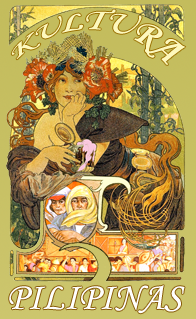

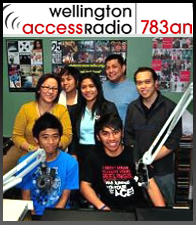
 This site is a member of the Filipi nos in New Zealand network of websites which can be accessed through its
This site is a member of the Filipi nos in New Zealand network of websites which can be accessed through its 